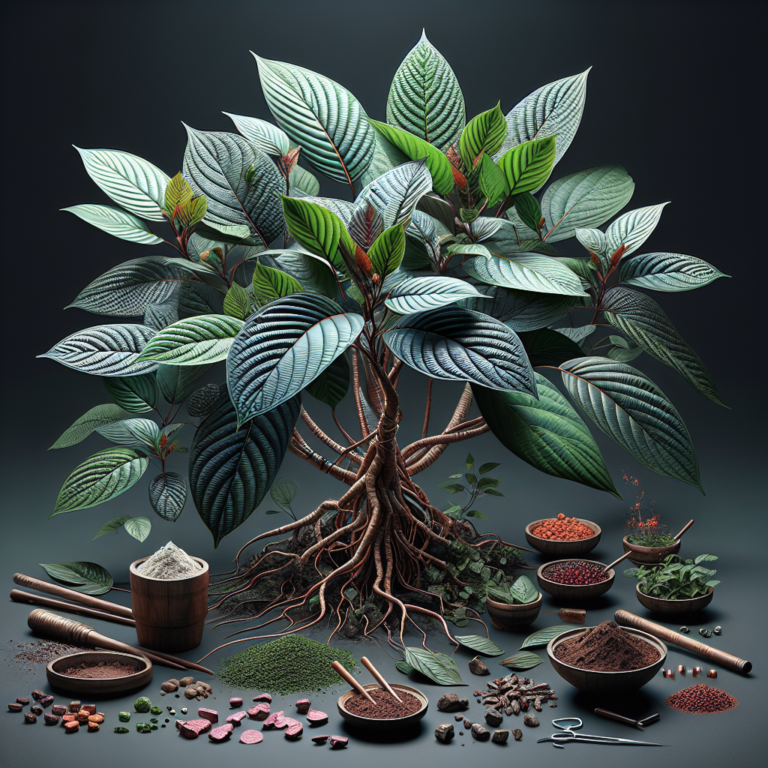
Introduction to Kratom: A Brief Overview
Kratom, or Mitragyna speciosa, is a tropical tree native to Southeast Asia, particularly in countries like Indonesia, Malaysia, and Thailand. The leaves of this tree have been used for centuries for their unique properties. Traditionally, locals would chew the leaves to boost energy levels, relieve pain, or enhance their mood. As interest in natural supplements has grown, Kratom has gained popularity worldwide.
In this blog post, we’ll focus on the harvest and history of Indo Kratom, specifically the strains sourced from Indonesia. The land’s unique climate and soil conditions make it an excellent source for high-quality Kratom. From the traditional methods of harvesting to the cultural significance, we’ll explore everything this fascinating plant has to offer.
History of Kratom in Indonesia
Ancient Roots: The Origins of Kratom Use
Kratom has a deep-rooted connection to the cultures of Southeast Asia. Indigenous peoples have utilized its leaves for generations. Early records suggest that Kratom was first used by workers in the 19th century, who chewed the leaves to stave off fatigue. They found that the stimulating effect of the leaves helped them work longer hours without tiring.
As time progressed, the use of Kratom spread throughout Southeast Asia. Farmers, laborers, and travelers relied on the leaf’s benefits. In Indonesia, the tradition of using Kratom became engrained within local culture. People often used it in social settings or as a remedy for various ailments.
Spread to the West: The Modern Era
In recent years, interest in Kratom has surged beyond its traditional borders. Western countries began to recognize Kratom’s potential for natural pain relief and mood enhancement. This led to a growing market for various strains, including Indo Kratom. Many users seek out these strains for their known efficacy and different effects.
The shift in perception has sparked debates about Kratom’s safety and legality. While advocates highlight its benefits, regulators and health officials raise concerns about potential risks. The conversation around Kratom continues as more research and user experiences emerge.
Understanding Indo Kratom
What Makes Indo Kratom Unique?
Indo Kratom is prized for its robust effects and high potency. Grown in the rich, fertile soil of Indonesia, the leaves of the Kratom tree develop distinct properties. The diverse climates and regions in Indonesia yield various strains, each with its characteristics.
But what truly sets Indo Kratom apart is the careful cultivation and harvesting methods involved. Growers utilize traditional practices to ensure high quality. They monitor growth closely to harvest leaves at the right time, capturing their full potential.
Varieties of Indo Kratom Strains
Indo Kratom comes in several popular varieties. These include:
- Indo Red Vein: Known for its calming effects, users often choose this strain for relaxation and pain relief.
- Indo Green Vein: This variety boasts a balanced profile, providing both stimulation and pain relief. Users appreciate it for social activities and productivity.
- Indo White Vein: Recognized for its energizing effects, the white vein strain is favored by those looking to increase focus and concentration.
Each strain offers unique experiences, often characterized by color variations on the leaves. Users should experiment cautiously to discover which strain suits them best.
The Harvesting Process
Traditional Harvesting Techniques
Harvesting Kratom requires skill and knowledge passed down through generations. Local farmers begin the process by selecting the right trees. They look for trees that are mature, healthy, and have leaves at the ideal developmental stage. Typically, older leaves carry more potent alkaloids, giving them higher efficacy.
Once the trees are selected, farmers carefully handpick leaves. This involves climbing the trees to reach the upper branches where the most potent leaves are often found. It’s essential to choose leaves that are neither too young nor too old, as this can affect the quality of the final product.
Post-Harvest Procedures
After harvesting, the leaves are transported to drying facilities. Here, they undergo a critical transformation. Proper drying preserves the leaves’ alkaloids, enhancing their effectiveness. The leaves are usually spread out in thin layers, allowing air circulation for even drying.
Farmers often use natural sunlight to dry the leaves, although some may opt for shaded areas. It’s crucial not to expose the leaves to moisture, as this can lead to spoilage. This meticulous process ensures that the final product meets quality standards.
Quality Control and Testing
Ensuring High Standards
Quality control is paramount in the Kratom industry. Many growers adhere to strict guidelines to ensure their product meets expectations. This involves regular testing for contaminants, including heavy metals, pesticides, and other impurities.
Reputable suppliers also source their Kratom from sustainable farms. By promoting ethical harvesting practices, they contribute to the preservation of the ecosystem. This holistic approach appeals to environmentally conscious consumers.
The Role of Third-Party Testing
Independent laboratories play a vital role in verifying the purity and strength of Kratom products. Most credible vendors offer lab results to consumers, providing transparency and building trust. By requesting these results, buyers can make informed decisions.
Educating oneself about quality indicators can save consumers from subpar products. Look for vendors that share lab results, use clear labeling, and prioritize quality farming practices.
Consumer Education: Responsible Usage
The Importance of Research
Before using Indo Kratom, it’s essential to do thorough research. Understanding strain differences is critical for maximizing benefits and minimizing potential side effects. Each strain has unique properties and effects that can differ from person to person.
Additionally, potential users should educate themselves about appropriate dosages. Starting with a lower dose allows the body to adjust and helps gauge individual reactions. Gradually increasing the dose ensures a safe experience.
Safety Guidelines
While many people enjoy the benefits of Kratom, it’s vital to remember some safety guidelines:
- Start with a small dose to assess your body’s response.
- Avoid mixing Kratom with other substances, especially alcohol or sedatives.
- Stay hydrated to reduce the likelihood of adverse effects.
- Consult with a healthcare professional before starting Kratom, especially if you have pre-existing health conditions.
Following these guidelines can lead to a more enjoyable and safe Kratom experience.
The Future of Indo Kratom
Market Trends and Developments
As interest in herbal supplements continues to rise, the Kratom market evolves. More consumers seek out Indo Kratom for its unique features and effective properties. Businesses are tailoring products based on consumer feedback and preferences, ensuring variety and quality.
Sustainability is also becoming a key focus. Many consumers prioritize eco-friendly products, pushing suppliers to adopt sustainable practices in farming and harvesting. This move not only benefits the environment but also supports local communities.
Research and Regulation
Ongoing research into Kratom’s benefits and risks will shape its future. The scientific community is exploring the various compounds found in Kratom, uncovering more about its effects on the human body. As studies unfold, they may lead to more acceptance and understanding of this remarkable plant.
At the same time, regulations around Kratom remain a topic of discussion. Advocates argue for its legalization and regulation to ensure safety, while skeptics raise concerns about its potential risks. The dialogue surrounding these issues will likely influence Kratom’s stature in the broader market.
Conclusion
Indo Kratom embodies a rich history and a bright future. Its unique properties and careful harvesting practices place it among the most sought-after natural supplements today. By understanding its roots, benefits, and the importance of responsible use, consumers can navigate the Kratom landscape effectively.
As more people discover the power of Indo Kratom, its role in wellness continues to expand. Both ancient traditions and modern innovations blend seamlessly, creating new opportunities for both consumers and growers.
Frequently Asked Questions
1. What is the main difference between Indo Kratom and other types?
Indo Kratom is known for its balanced effects, often providing both relaxation and stimulation. Strains from other regions may have different potency and effects.
2. Can I use Indo Kratom for pain relief?
Many users report pain relief as one of the primary benefits of Indo Kratom. The red vein strain, in particular, is popular for this purpose.
3. How should I store Indo Kratom?
Avoid moisture and direct sunlight. Store it in a cool, dark place, ideally in an airtight container, to preserve its potency.
4. Is Indo Kratom safe to use?
While many find it beneficial, it is essential to use Indo Kratom responsibly. Start with small doses and consult a healthcare professional if unsure.
5. How can I find reputable suppliers of Indo Kratom?
Look for suppliers who offer lab testing results, clear labeling, and adhere to sustainable practices. Customer reviews can also provide insight.
6. How does the drying process affect Indo Kratom?
Proper drying preserves the alkaloids in Kratom leaves, enhancing their effects. Inadequate drying can lead to spoilage and reduced potency.
7. Can I mix Indo Kratom with other substances?
It’s best to avoid mixing Indo Kratom with alcohol or other sedatives, as this can increase the risk of adverse effects.
8. What are the most popular Indo Kratom strains?
The most popular strains include Indo Red Vein for relaxation, Indo Green Vein for balance, and Indo White Vein for energy and focus.
9. How do I know how much Indo Kratom to take?
Start with a lower dose and gradually adjust as needed. It’s vital to pay attention to your body’s reactions.
10. Are there any long-term effects of using Indo Kratom?
Research on long-term effects is still limited. Using it responsibly and consulting healthcare professionals can help mitigate risks.





